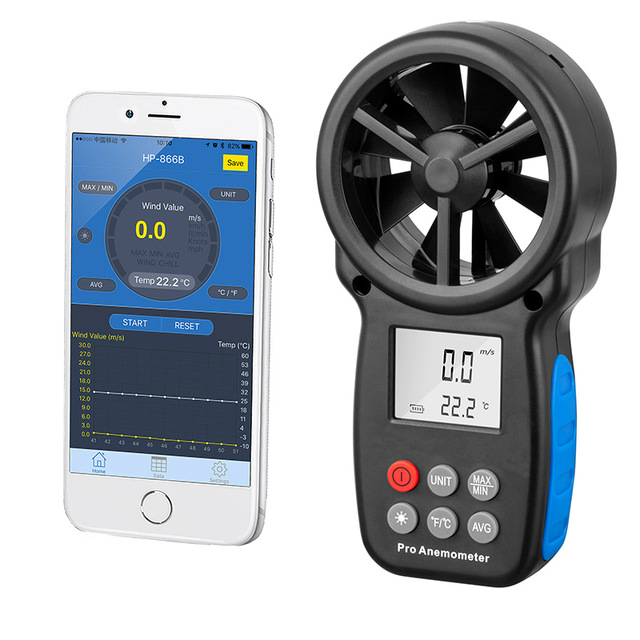Expert Tips for Adjusting Your Anemometer for Optimum Efficiency
Expert Tips for Adjusting Your Anemometer for Optimum Efficiency
Blog Article
Anemometers Unveiled: Comprehending Their Importance in Environmental Surveillance and Precaution
The function of anemometers in environmental surveillance and security measures is commonly taken too lightly, yet their relevance is undeniable. From meteorology to air travel safety and security, anemometers play a critical function in offering accurate information that informs decision-making processes and improves total safety and security.
Background of Anemometers
The evolution of anemometers can be traced back to the old civilizations where simple wind gauging devices were first made use of. One of the earliest known anemometers was the hemispherical mug anemometer invented by Leon Battista Alberti in the 15th century.
Over the years, developments in technology led to the advancement of even more contemporary anemometers, including ultrasonic anemometers and laser Doppler anemometers, using boosted accuracy and efficiency in gauging wind speed and instructions. The background of anemometers showcases an exceptional journey of development and progression in the area of weather forecasting.
Sorts Of Anemometers
Throughout the area of weather forecasting, various kinds of anemometers have been created to accurately gauge wind speed and direction. Sonic anemometers make use of ultrasonic signals to measure wind speed and direction properly. Hot-wire anemometers run based on the concept that the cooling result of wind on a warmed wire is proportional to the wind speed.
Applications in Weather Forecasting
Having actually gone over the numerous sorts of anemometers utilized in meteorology for determining wind rate and instructions, it is vital to discover their functional applications in the area. Anemometers play a vital function in weather forecasting by offering real-time and accurate data on wind conditions (anemometer). Meteorologists use anemometers to monitor wind speed and direction to forecast weather patterns, issue cautions for serious weather events like twisters, storms, and hurricanes, and evaluate weather for air travel safety
In meteorology, anemometers assist in understanding regional and local wind patterns, which are crucial for predicting weather changes and figuring out climatic fads. These tools are likewise used in study to research microclimates, metropolitan heat islands, and air pollution diffusion. Furthermore, anemometers are used in farming to enhance crop administration techniques, such as irrigation and pesticide application, based upon wind conditions.
Importance in Air Travel Safety And Security
An important element of making sure air travel safety and security exists in the thorough tracking of wind problems using anemometers. Anemometers play a crucial check my blog role in aviation by providing real-time data on wind speed and instructions, aiding pilots in making educated choices throughout touchdown, trip, and liftoff. Unforeseeable and solid winds can substantially impact airplane operations, making it crucial for aeronautics authorities to depend on exact wind measurements to ensure the security of guests and staff.

In the dynamic atmosphere of aeronautics, where even minor adjustments in wind speed and instructions can have profound results, anemometers stand as important tools for advertising secure and safe air traveling.
Function in Environmental Research Study
Just how do anemometers add to developments in environmental research? Anemometers play a critical duty in environmental study by giving crucial data on wind speed and direction. This information is essential for comprehending numerous climatic procedures, such as air pollution diffusion, weather condition patterns, and environment adjustment. By precisely determining wind features, anemometers assist researchers analyze the movement of toxins airborne, assess the influence of industrial exhausts, and find more info anticipate the spread of contaminants in the atmosphere.


Conclusion
In conclusion, anemometers have actually played a vital role in ecological monitoring and safety and security procedures. Understanding the importance of anemometers is important for precisely measuring wind click here to find out more rate and direction, which is essential for forecasting climate patterns, guaranteeing safe air travel procedures, and carrying out ecological research studies.
One of the earliest recognized anemometers was the hemispherical mug anemometer developed by Leon Battista Alberti in the 15th century. Over the years, improvements in innovation led to the growth of more modern-day anemometers, consisting of ultrasonic anemometers and laser Doppler anemometers, providing enhanced precision and effectiveness in gauging wind rate and direction. Hot-wire anemometers run based on the principle that the cooling result of wind on a warmed cord is proportional to the wind speed. Meteorologists make use of anemometers to keep track of wind speed and instructions to forecast weather patterns, issue cautions for serious weather condition events like tornadoes, storms, and cyclones, and evaluate climatic conditions for aviation security.
Comprehending the importance of anemometers is necessary for precisely gauging wind rate and direction, which is vital for forecasting weather condition patterns, making certain secure aeronautics procedures, and carrying out ecological researches. (anemometer)
Report this page